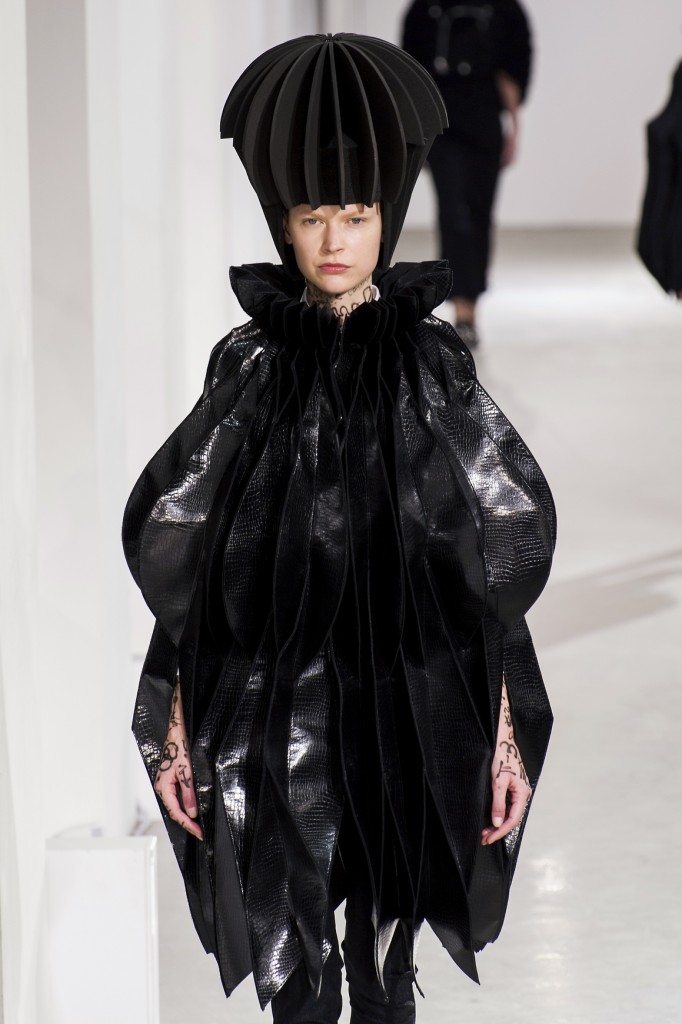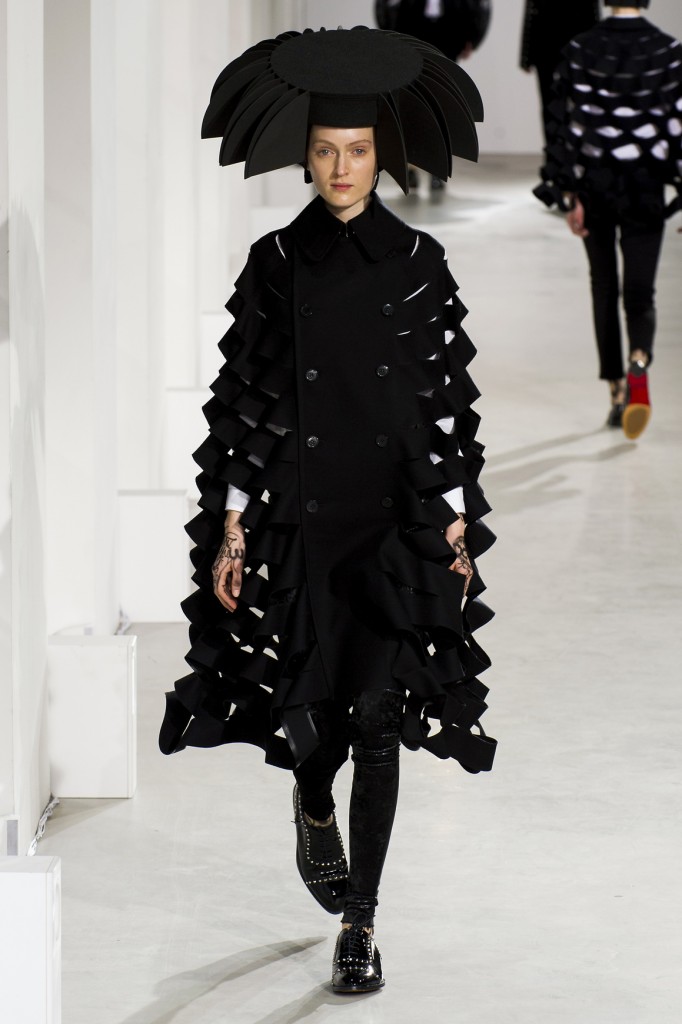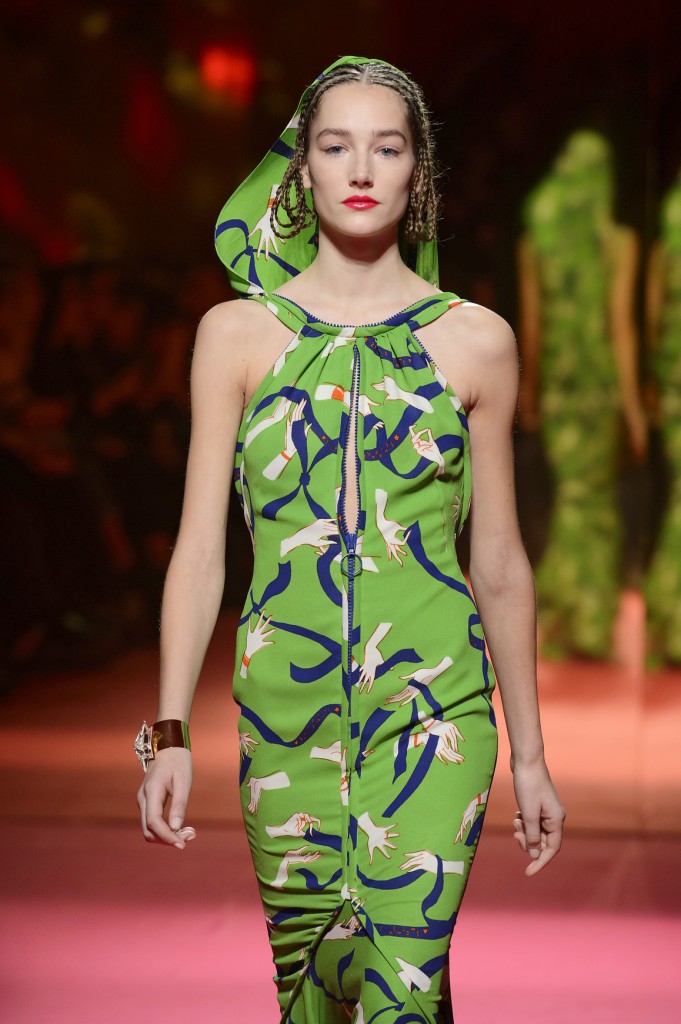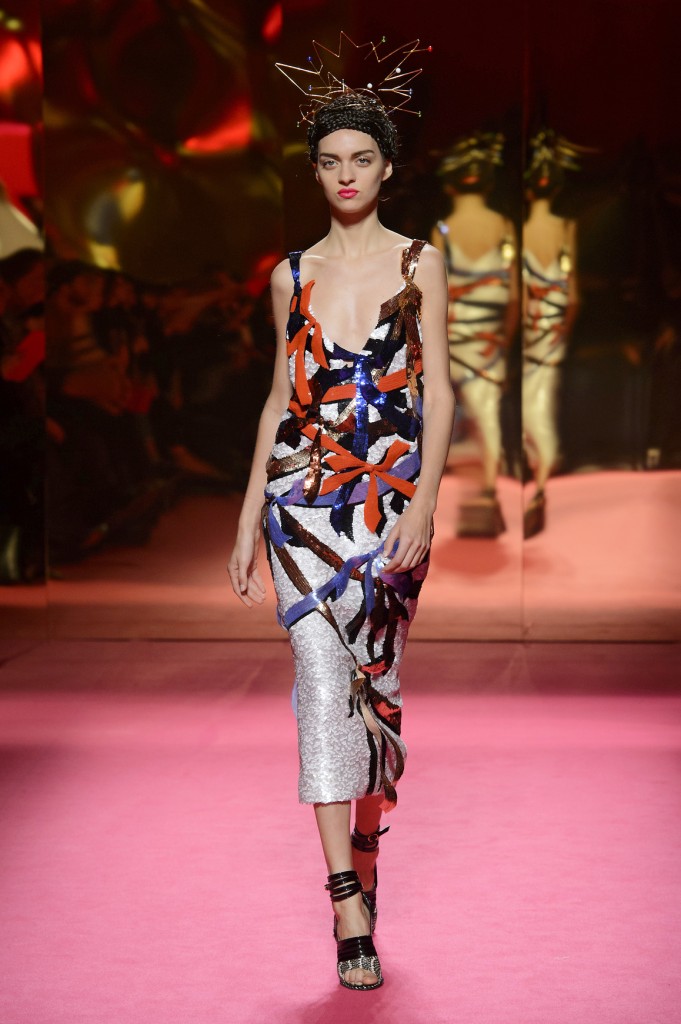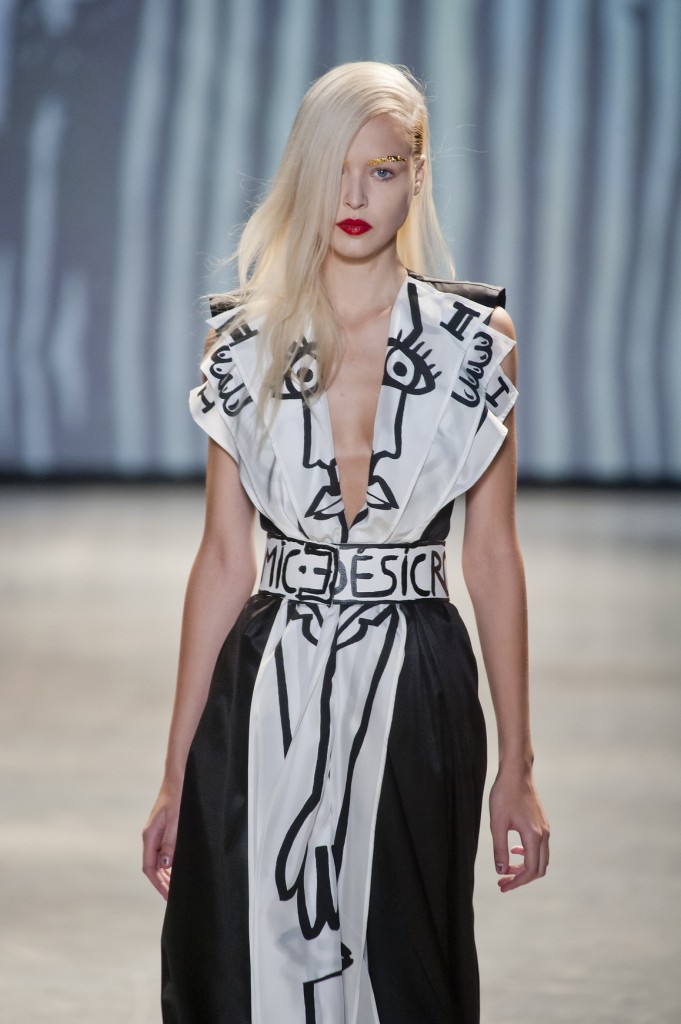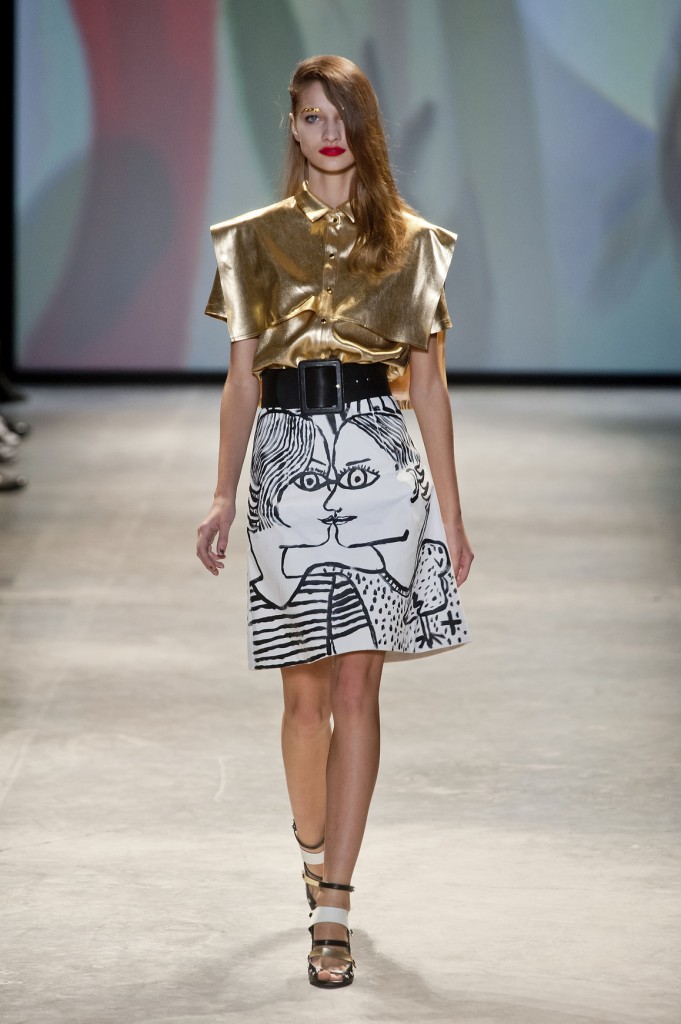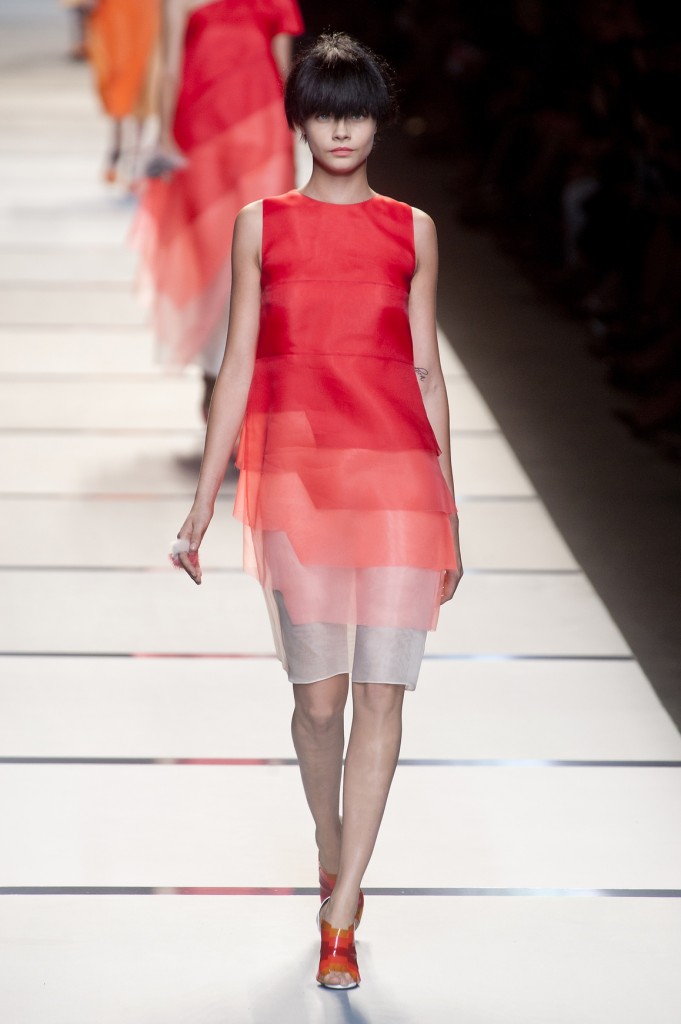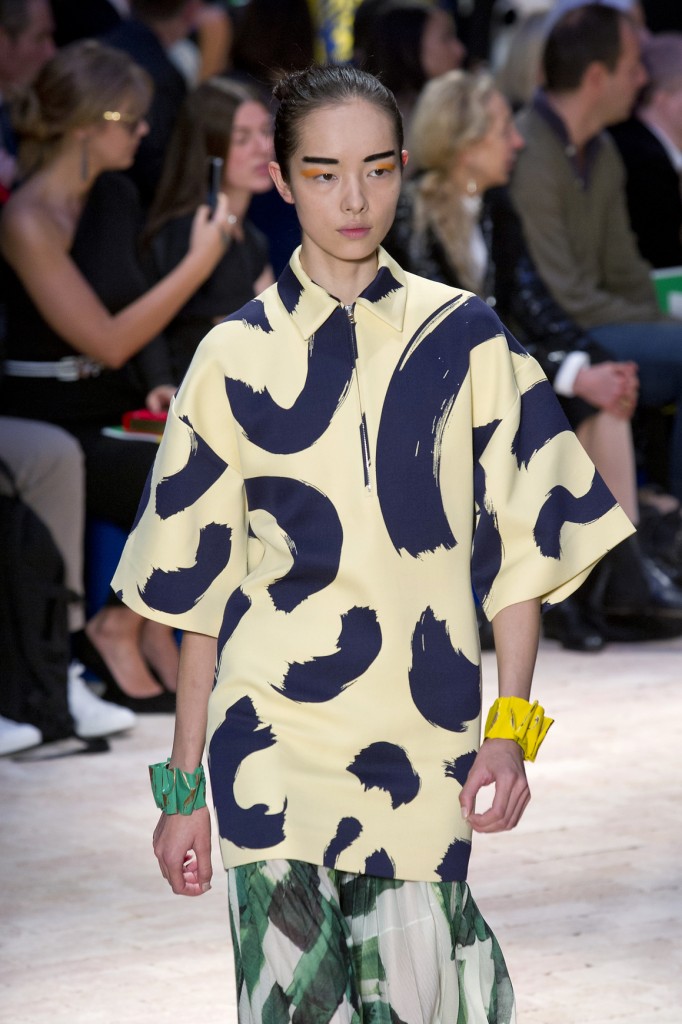The Tug of War between Fashion and Art
The Tug of War between Fashion and Art
Fashion Week. It always sparks the casual coffee conversations after its debut. Countless think pieces have been written on the state of haute couture and the synergetic relationship between fashion and art.
The restlessness of fashion and its inherently cyclical nature is what drives the industry. It’s kind of redundant but seems justified after seeing Junya Watanabe A/W15 – hello, origami-like mathematical patterns and designs influenced by Victor Vasarely.
Junya Watanabe Autumn-Winter 2015
One thing that will be mentioned while you sip on your atrocious instant coffee: Is fashion art? This tedious question falls into the same circle jerk as the chicken or the egg dilemma. Claiming that fashion is art still causes furrowed brows. It’s fair to say that fashion is, first and foremost, a business. Let’s get real here: the same thing can be said for art.
Junya Watanabe Autumn-Winter 2015
With fashion, as in art, we can refer to the status ambiguity: fashion is simultaneously considered and not considered as valuable. Sure, most would agree that the derivative works created by mass market retailers H&M and Zara – or the copies of Forever 21- is not akin to art.
Even though, fashion magazines try to convince twentysomethings that their new embroidered organza top is art in its deceitful simplicity.
Schiaparelli Spring-Summer 2015
Still, the distinction between high art versus applied art is unfounded and arbitrary distinction. The creation of fashion can be very similar i.e. to that of a painting: in the field of materials science, engineering, intent. Ultimately, both fashion and art are able to capture the zeitgeist of society.
Let’s take a look at the fashion/art binary. Fashion like art is exhibited in art galleries and museums. In 1983 work of Yves Saint Laurent – the Mondrian Dress- was exhibited in The Met in New York.
In 2012, the fashion house Salvatore Ferragamo held a fashion show in the Louvre. Interdisciplinary interaction between the two is not a novelty.
Marc Jacobs worked with the Japanese ‘dot’ artist Yavoi Kusama for Louis Vuitton, graphic designer Job Wouters struck up a collaboration with Dries van Noten and Richard Prince worked with Takashi Murakami.
Schiaparelli Spring-Summer 2015
For S/S2014 Phoebe Philo used graphic inspiration of 20th century Brassaï at Céline. Fendi and Valentino gave us contemporary geometric and mod abstracts and Charles de Castelbajac echoed Picasso. So, once in a while the twain will meet.
Jean Charles de Castelbajac Spring-Summer 2014
Whether or not you put fashion among art, we first must have a definition of art that we can test. This in itself is already a difficult, if not impossible, task. Is art a category that is defined by an art authority, when it gains access to a museum or exhibition? Or simply when it itself determined that something is art because it was the intention of the artist to make art.
Nevertheless, to consider fashion as art is not insurmountable. We can observe a direct link between the two. Fashion in paintings can teach us a lot about its history. Some artworks contain immensely detailed knowledge of the materials by the artists.
Jean Charles de Castelbajac Spring-Summer 2014
It is as if the paintings are intended to produce the depicted fashion. Iconic designers such as Coco Chanel and Elsa Schiaparelli fit both surrealist influences to their attire. Chanel’s circle of friends included artists such as Picasso and Dali, as well as musicians such as Stravinsky and poets such as Cocteau.
The friendship between Schiaparelli and Dali led to a collaboration. Dali designed fabrics for Schiaparelli – for example the ‘Tear Dress’ – and was asked to portray his fashion for American Vogue. In this case there was surrealist influence on fashion.
Fendi Spring-Summer 2014
To quote Malcom Barnard: “Art and fashion have shared a symbiotic relationship in which each discipline simultaneously encourages and competes with the other.” Pop art is an art form par excellence to this statement. The go to example is Andy Warhol. The creator of the production of popular art; pop art and consumer culture and the inclusion of ordinariness, its recorded by him in a masterful way.
Pop art still influences the fashion designers of today, see Jeremy Scott, Phillip Lim, Riccardo Tisci, or Kenzo with their collaboration with surrealist magazine Toilet Paper . Let’s not rule out fashion illustration. Modern illustrators such as Hattie Stewart broaden their work and venture into design. Stewart now has her own line in collaboration with British designer Henry Holland.
Celine Spring-Summer 2014
In 2013, Lagerfeld mentioned that he is done with the dilemma and felt that people are too analytical and overreact to art – interesting remark since he incorporated work of Jeff Koons for his S/S2014 Chanel venue and used his color, texture and cultural references for the Pantone paint-palette dresses – against a backdrop of Jay-Z’s “Picasso Baby”. Ironic, much?
Fashion entails both business and creativity. The trends, the seasonal changes, the creative expression and the revenue. In the end, most people couldn’t give a fig if fashion is art or art is fashion. We’re just happy we can find affordable items in the piles and piles of clothes at H&M and Zara.
I’ll see you in line.
The Tug of War between Fashion and Art


